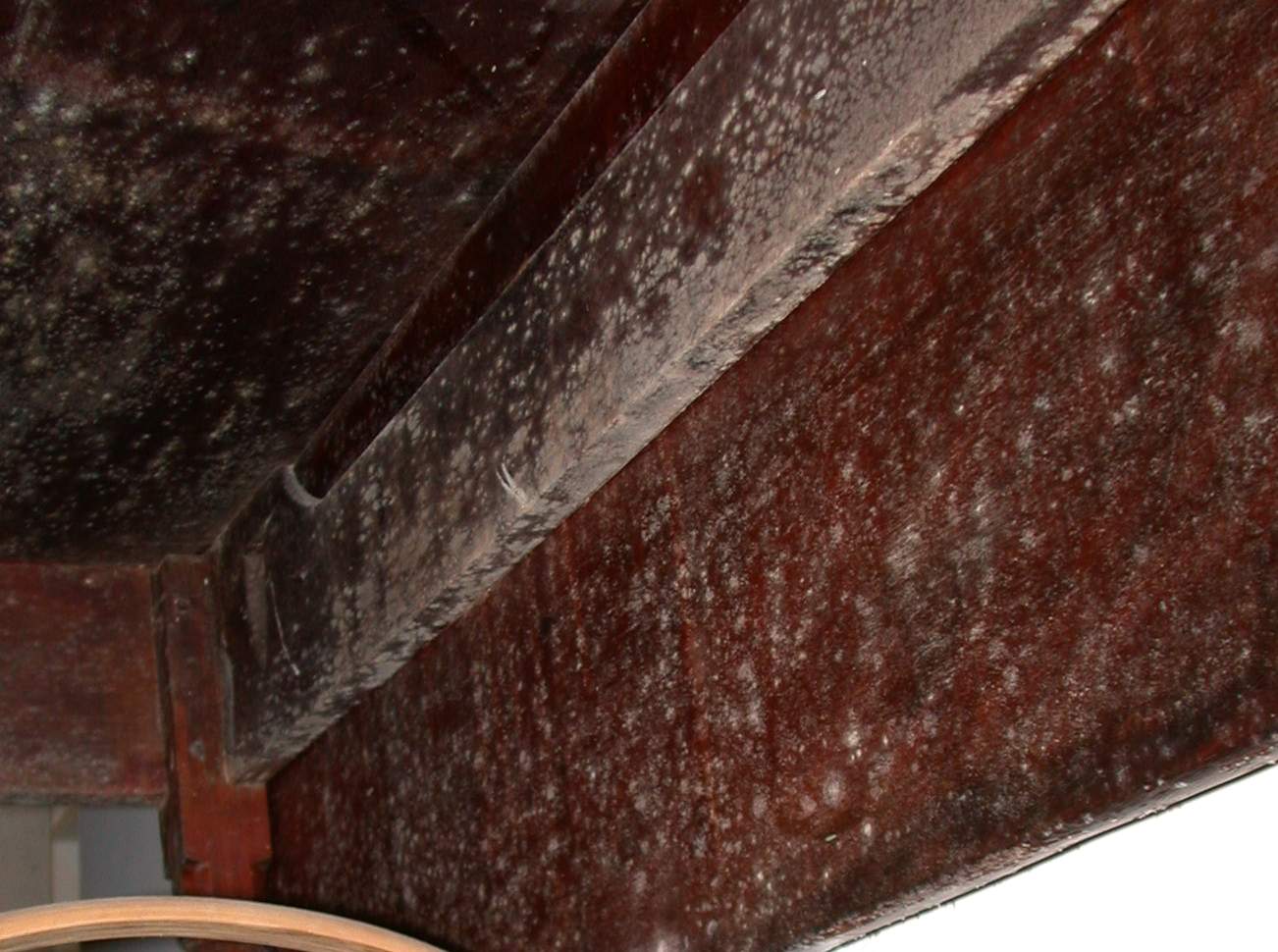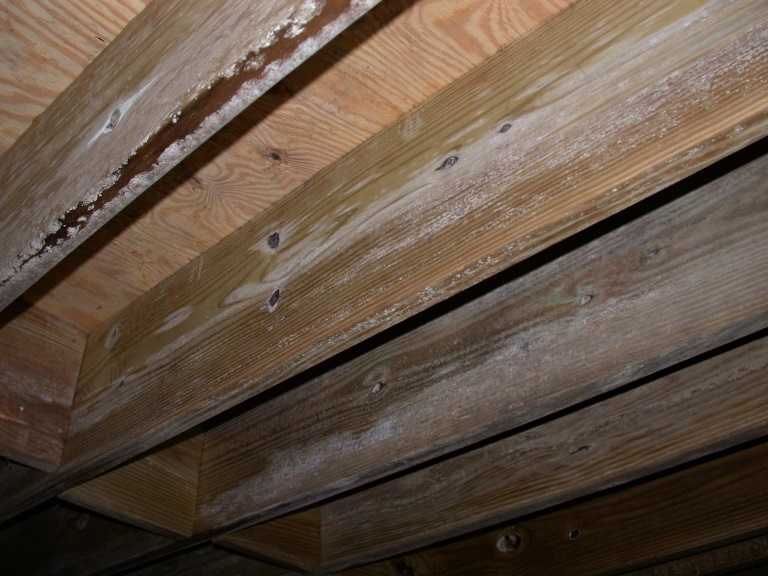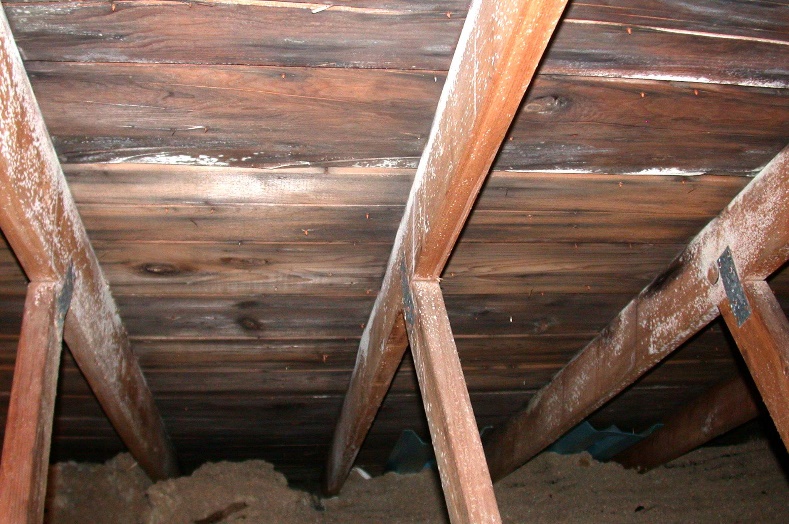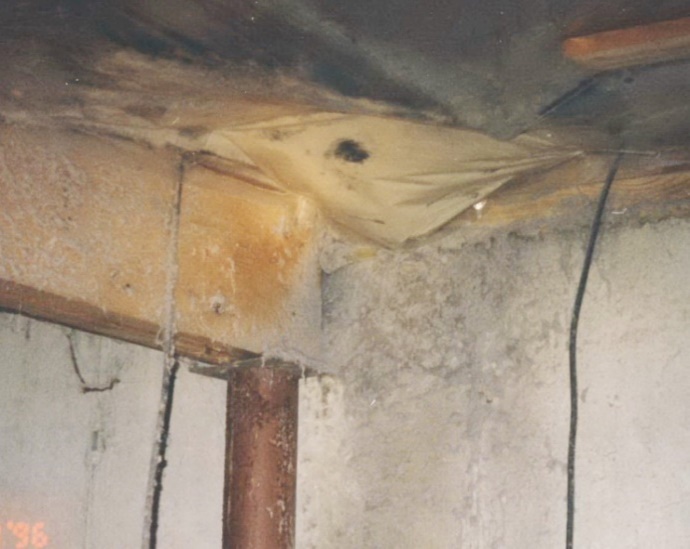Homeowner Newsletter, Spring/Summer 2024
©2024 Jeffrey C. May
Relative humidity (RH) is an important concept, because mold can flourish in your home both above and below grade (above and below the ground) if the RH is too high. Here are eight concepts about moisture and RH that are important to understand (I was once a science teacher, so please bear with me if I seem to be “lecturing” here).
- RH is a measure of how much moisture is in the air as compared to the maximum amount of moisture that air can hold at any given temperature. If the RH is 75%, it means that that the air can hold 25% more moisture so long as the air remains at that temperature.
- Cool air can hold less moisture than warm air can, so as air cools, its RH rises.
- Air reaches the “dew point” when its RH is 100%. At that point, moisture will begin to condense on cool surfaces.
Note: Air is not usually at a uniform temperature in an indoor space. It may be cooler next to an exterior wall (one that faces the exterior) that does not have sufficient insulation in the wall cavity, or warmer next to a radiator, baseboard heating convector, or register for a hot-air supply duct when the heat is running.
- Mold does not always need liquids to grow. When the RH is over 80%, some molds including allergenic Penicillium and Aspergillus species can grow on biodegradable materials such as cardboard, paper, leather, and surface dust, because the materials adsorb moisture from the air.
- Unfinished basements are naturally cool and damp, since the floors and walls are in contact with the cool earth. If hot, humid air flows into a basement, the RH will rise in the air in connection with cool concrete surfaces. If that air reaches the dew point, moisture can even begin to condense on the concrete.
- Crawlspaces below grade that are vented to the exterior can be open to hot, humid air, depending on weather conditions. If the RH rises high enough in a crawlspace, mold can grow on crawlspace surfaces.
Exterior air is one of the major sources of moisture in a crawlspace with a concrete slab or a vapor barrier over the soil.
- Many antique pieces of furniture have been stored at some point in cool, damp places like basements and garages. Then mold growth could have occurred on the bottoms, backs, and legs of such pieces, which is why stores that sell antique furniture can smell musty. The finished surfaces of the furniture probably have been cleaned and polished, but the backs and bottoms of furniture pieces may still contain mold growth, often not readily visible.

- Even when an attic is well ventilated, mold can grow on the roof sheathing if there is excess moisture present and the RH increases to 80% or above. That moisture can come from exterior weather, from the rooms below the attic if there is a leaky access panel or pull-down stairs leading to the attic, or from a bathroom exhaust fan that is vented into the attic or soffit.
- Fix pipe leaks as soon as possible.
- Keep roof-water out of your basement by keeping gutters and downspouts clean. Be sure that downspout water is directed away from rather than toward your foundation wall.
- Replace your hot-water heater before the end of its useful life.
- Place floor-water alarms near the base of your hot-water heater and the base of your washing machine. Such alarms are relatively small, are usually available at box stores, and can be battery-operated or attached to a central alarm system, if present.
- Unfinished basements must be consistently dehumidified in the humid season (in New England, generally from mid-April to mid-October), with the relative humidity kept under 50%. Close basement windows when you dehumidify; otherwise, you could be attempting to dehumidify the neighborhood!
- Crawlspaces should not have dirt floors, should be isolated from the exterior (no open vents, please), and be dehumidified during the humid season, with the relative humidity kept under 50%.
- A finished basement should be air conditioned or dehumidified during the humid season and consistently heated during the rest of the year, whether you are using the space or not. The thermostat should be set at a minimum of 60oF, and the relative humidity should be kept under 60%.
- To measure the RH in a crawlspace and basement (whether finished or unfinished), use several thermo-hygrometers, placed on or near the floor in exterior corners (corners that face the exterior). Some thermo-hygrometers can be remote-read, so you wouldn’t have to go into the basement or crawlspace to read the RH levels.
Control the RH, and you minimize the chances of having mold growth in your home. Here are some tips to help you keep your home mold-free.

- When a dehumidifier’s water tank is full, the machine will shut off. To prevent this from happening, you can attach the machine to a condensate pump so that it can drain into a sink, sump, or to the exterior. You could also hang the dehumidifier over a sink so that it can drain directly into that sink.
An “exhaust only dehumidifier” is not a trustworthy device to reduce the RH in a basement. Yes, it vents air out of the basement and thus reduces musty smells, but it also reduces the air pressure in the space. Since air flows from high pressure to low pressure, air can then flow from the exterior into the basement through gaps and openings, including leaky basement windows or a leaky bulkhead. If the weather is hot and humid, the exterior air will introduce moisture into the basement. Air can also flow from the first floor down into the basement if the door leading to the basement is not airtight. That air, too, could be moist – for example, if it is flowing down from a warm, moist kitchen. This will also increase the RH in the basement, potentially leading to condensation and mold growth on cool surfaces.
- Inspect the backs, sides, and bottoms of antiques or used furniture before acquiring such pieces. You can see oval spots of mold growth better if you shine a flashlight sideways on a surface.
- Be sure that your bathroom exhaust fan vents directly to the exterior rather than into the attic or a soffit. Check that there are no openings or spaces around pull-down stairs or a hatch leading to the attic or to attic eaves.
- To reduce heat loss and airflow, install an airtight “attic tent” (a foam box) over the pull-down stairs or ceiling hatch leading to the attic. If you have attic eaves, you can attach a piece of solid sheet-foam insulation to the attic-facing side of the access hatch. If you have a staircase that leads to the attic, you can attach such insulation to the attic-facing side of the door leading to the stairs.

- A clothes dryer should vent directly to the exterior and not into a crawlspace.

For more guidance on how to keep the air in your home free of mold spores and other allergens and irritants, refer to our books on indoor air quality (IAQ). The latest one is Edition 2 of My House is Killing Me. Part III of The Mold Survival Guide focuses on mold remediation and removal, including from personal goods. Both books are available on line.
The photographs in this article are the property of May Indoor Air Investigations and can be used only with permission. jeff@mayindoorair.com 978-649-1055
NEW! A LIST OF RESOURCES
Indoor Air Quality in Buildings: A Comprehensive Review on the Factors Influencing Air Pollution in Residential and Commercial Structure: https://www.ncbi.nlm.nih.gov/pmc/articles/PMC8004912/
Jeff May’s Articles appear in the following publications: The American Society of Home Inspector’s magazine, “The Reporter” – https://www.homeinspector.org/; and Healthy Indoors Magazine – https://healthyindoors.com/.
Interviews with Jeff May:
https://healthyhome.byhealthmeans.com/order (should be available now)
https://www.gotmold.com/podcast/summit-for-wellness/ (available in September)
If you have chemical sensitivities (does perfume bother you?), the Massachusetts Association for the Chemically Injured offers support and resources: https://www.maci-mcs.org/. (Jeff is on the Board of this organization.)
The Indoor Air Quality Association offers geographic lists of indoor air quality professionals and runs an annual conference: https://iaqa.org/.
